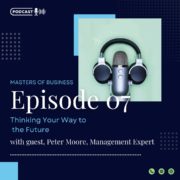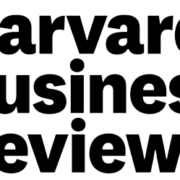Most companies today can tell you the approximate lifetime value of their core customers and what they are doing to realize the full potential of that value. How many companies can tell you the lifetime value of their most valued employees and what they are doing get that contribution from them?
Many companies have now adopted the Net Promoter Score metric created and introduced by Frederick Reichheld in 2006 which asks customers “How likely is it that you would recommend this company ( and its products and services ) to a friend or colleague?” How many companies ask their employees “how likely is that you would recommend to a friend or colleague that they come to work at your company?”
A Case for Action: As I mentioned in my previous blog, companies are doing everything they can to squeeze more revenue out of fewer employees as they seek to bolster their bottom lines. In fact, since 2007 revenue per employee for those companies in the S&P 500 has increased 11.4%. The irony is that better overall productivity for the company has resulted in an ever growing population of over extended, multi-tasking individual employees who are delivering sub-optimal performance at work.
Recent studies have documented that the average employee:
…switches tasks every three minutes
…is interrupted every two minutes, and has a
…maximum focus stretch of 12 minutes.
Rather than making things better, this multi-tasking behavior actually makes things worse. Another study showed that when a person switches away from their primary task to do something else, they increase the time it takes to do the original task by 25%.
The biggest challenge for companies today is to think about their employees the same way they think about their customers. What do you need to do to engage them? What do they need so they can get better faster? What is the lifetime value of an employee who is fully engaged and able to deliver optimal performance every day.
Re-engaging With Your Employees: Rather than treating employees as costs, why not treat them assets who when fully developed and equipped can deliver ever increasing value to the company and its key customers and constituents? In today’s post-digital enterprise, the old vertically integrated, hierarchical organizational structures have given way to horizontally structured business networks. These new networks require increased demand for communication, coordination and collaboration among peers both internally across the enterprise and externally with customers, supply chain partners and other key constituents. To carry out these new roles employees need new tools and metrics to:
- Better equip them with the latest cloud, mobile and social media tools at work
- Better access to real time data analytics to help them learn faster than the competition
- Training and development programs that are focused on creating sustainable customer relationships not just efficiently handling customer transactions
- Measured by new metrics that more accurately reflect the increasing value they bring to the organization
- Compensated for delivering both short term results and increasing the company’s long term power to grow
Take Action: In order to re-engage with your employees and enable them to deliver optimal performance at work every day, the following action steps should be taken:
1. Validate and document the increased demand for communication, coordination and collaboration among peers both internally across the enterprise and externally with customers, supply chain partners and other key constituents.
2. Identify the company’s key moments of customer engagement and who represents the company at that engagement.
3. Determine what training and development investments should be made to fully prepare the employee for those key moments of engagement.
4. Determine what social media and technology tools an employee needs to be equipped with in order to create a successful moment of engagement.
5. Develop a set of metrics that measure the lifetime value of an employee who is fully engaged and able to deliver optimal performance every day.
6. Develop an employee net promoter score that lets you know how many of your employees would be likely to recommend to their friends and peers that that come to work at your company.
All things being equal, there is a much better chance for your company to realize the lifetime value of a core customer if your employees are recognized as critical assets to delivering that value and equipped with the necessary tools and resources to do so. If you can do that, then you will be as good at engaging your employees as you are at engaging your customers.




